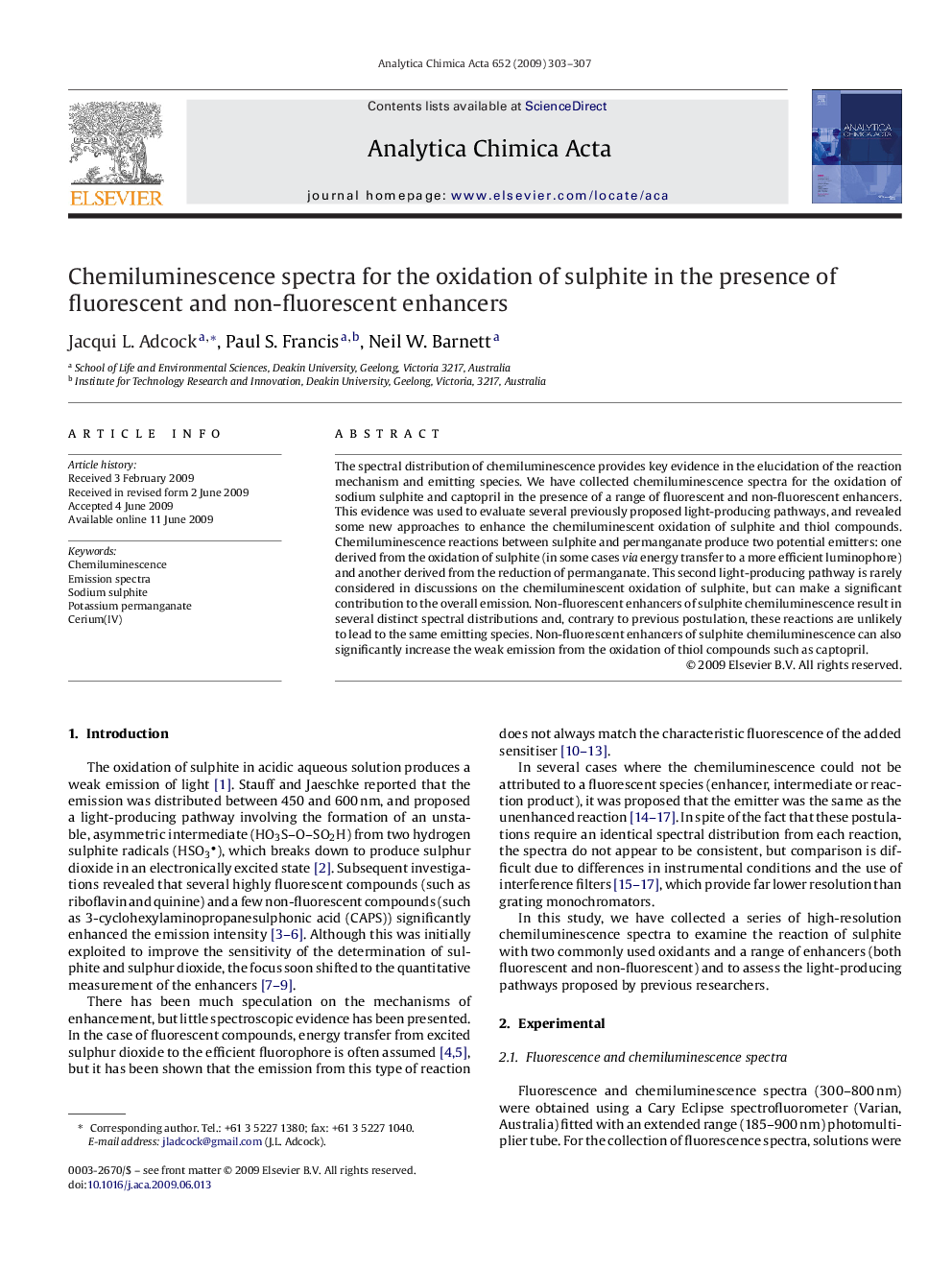| Article ID | Journal | Published Year | Pages | File Type |
|---|---|---|---|---|
| 1168297 | Analytica Chimica Acta | 2009 | 5 Pages |
The spectral distribution of chemiluminescence provides key evidence in the elucidation of the reaction mechanism and emitting species. We have collected chemiluminescence spectra for the oxidation of sodium sulphite and captopril in the presence of a range of fluorescent and non-fluorescent enhancers. This evidence was used to evaluate several previously proposed light-producing pathways, and revealed some new approaches to enhance the chemiluminescent oxidation of sulphite and thiol compounds. Chemiluminescence reactions between sulphite and permanganate produce two potential emitters: one derived from the oxidation of sulphite (in some cases via energy transfer to a more efficient luminophore) and another derived from the reduction of permanganate. This second light-producing pathway is rarely considered in discussions on the chemiluminescent oxidation of sulphite, but can make a significant contribution to the overall emission. Non-fluorescent enhancers of sulphite chemiluminescence result in several distinct spectral distributions and, contrary to previous postulation, these reactions are unlikely to lead to the same emitting species. Non-fluorescent enhancers of sulphite chemiluminescence can also significantly increase the weak emission from the oxidation of thiol compounds such as captopril.
